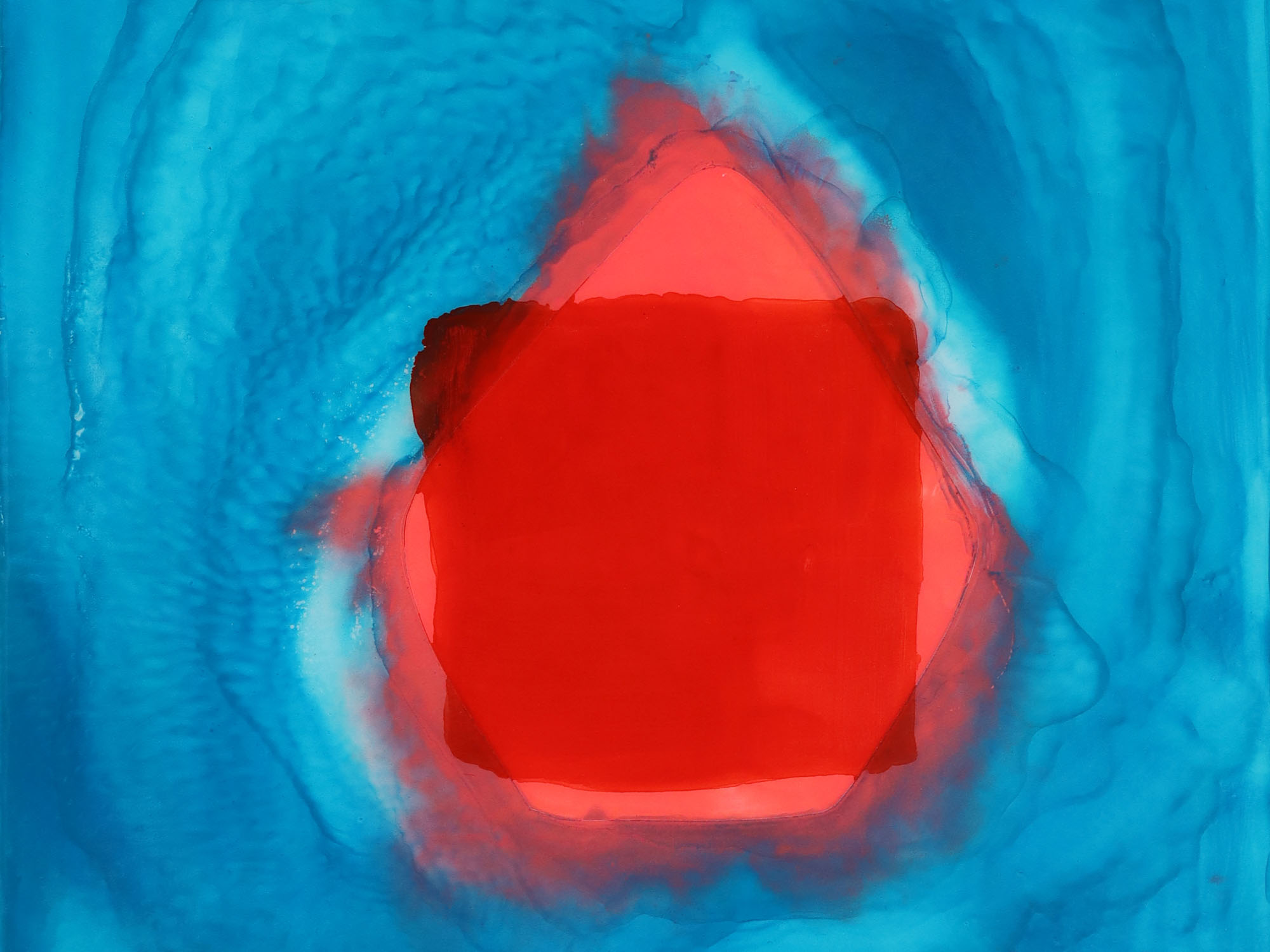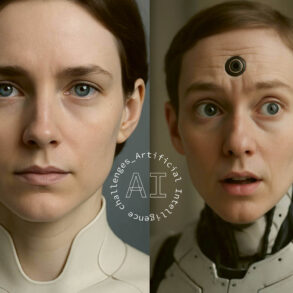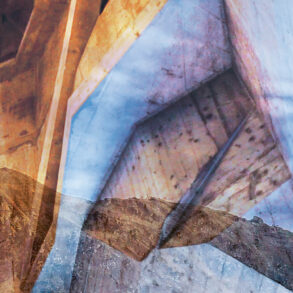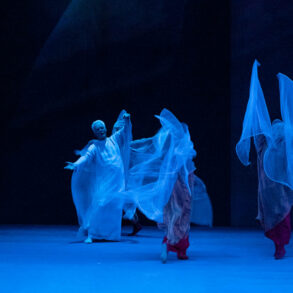The cosmos does not work, it invites, it expects. This expectation is revealed in a celestial spectacle in three acts: the great conjunction of Christmas 2020, the Easter dance of Mars and Venus in spring 2022, and the council of all the planets on St. John’s Day.
Now in the night sky, Jupiter and Saturn stand nearly 20 degrees apart as a white and yellow spot of light, yet their extraordinary conjunction of December 21, 2020, lingers. The two planetary giants were closer together than they had been for 500 years. The Great Conjunction of the Mighty Wanderers occurred on the day of the winter solstice, expanding this gathering around the sun. As the winter sun, the sun draws its deepest arc, emitting the least light and heat. Rather, the sun of the winter solstice represents the spiritual sun, which does not emit external light but shines into the soul. The winter sun rises again from its lowest position and was therefore addressed in the Mitras cult as the undefeated sun, the ‹sol invictus›. The Great Conjunction was thus a sign of the new sun, of the new life. In addition, the minor planet Pluto, which otherwise moves well above or below the zodiac level, was part of the encounter. Thus this Great Conjunction became a powerful image of death (Pluto) and rebirth (Winter Sun). The two sides of the self are represented by Jupiter and Saturn: Jupiter stands for knowledge, for the power of thought, and Saturn for sensitivity. Distance and freedom from the world. Emancipation and union with the world, this range, and the perpetual play of the ‹I› show Jupiter and Saturn. Individual constellations are snapshots of constant change, comparable to a single note in a symphony. It is therefore worth looking at what constellations have emerged from and what they are developing into.
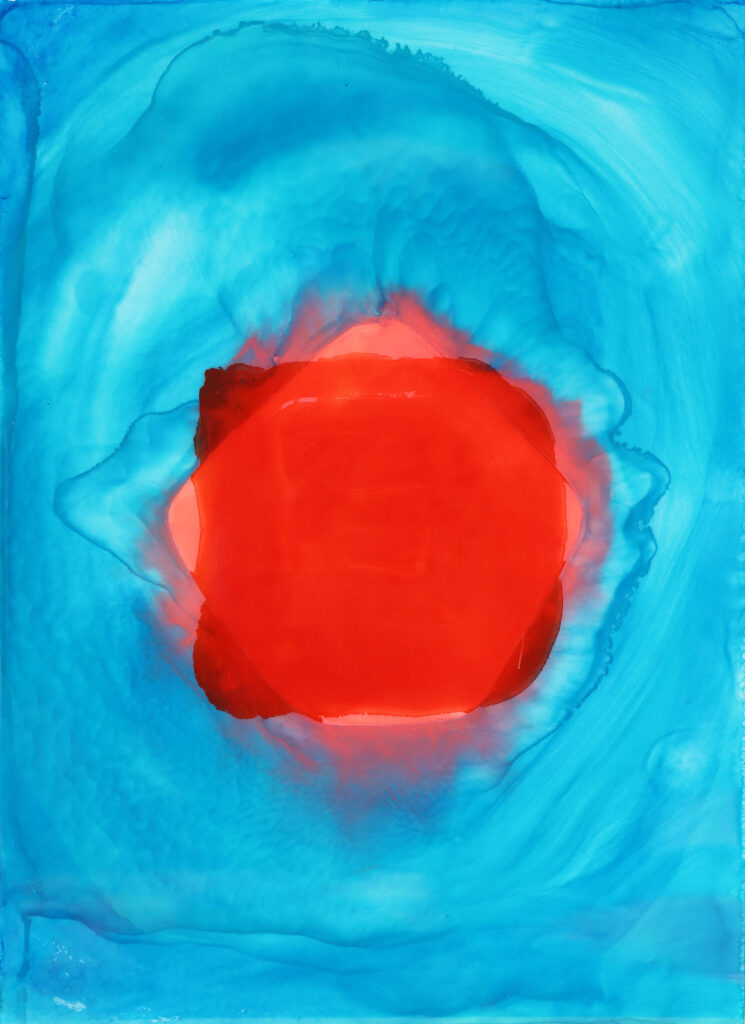
Starting from zero
In fact, the next act of this celestial spectacle will take place in 2022, enhancing the great Christmas constellation yet again. It begins on the last day of 2021: barely visible in the morning sky, Mars passes the main star of Scorpio. Antares means ‹Like Ares, like Mars›, and is related to the red planet like no other star. In summer, its sparkling radiance is impressive, in which the energy of the dramatically curved zodiac sign Scorpio seems to gather. The image is bright, and it is precisely this brightness that makes the darkness of this stellar region so vivid. What is often overlooked: Scorpio shares this field of the zodiac with Asklepios, the serpent bearer. It is a delicate wide circle that stretches above the Scorpio and promises healing and new life. Here is Mars, the red planet, at the red star. Interestingly, where the Scorpio has its stinger on its tail is the galactic center of the Milky Way. There lies the mass chasm, the suspected black hole of our galaxy. At this threshold of death and new life and on New Year’s Eve, the crescent moon appears and thus welds planet and star together. It is a zero point, a moment of change, of pain, over which Asklepios’ new life is built like a mighty promise.
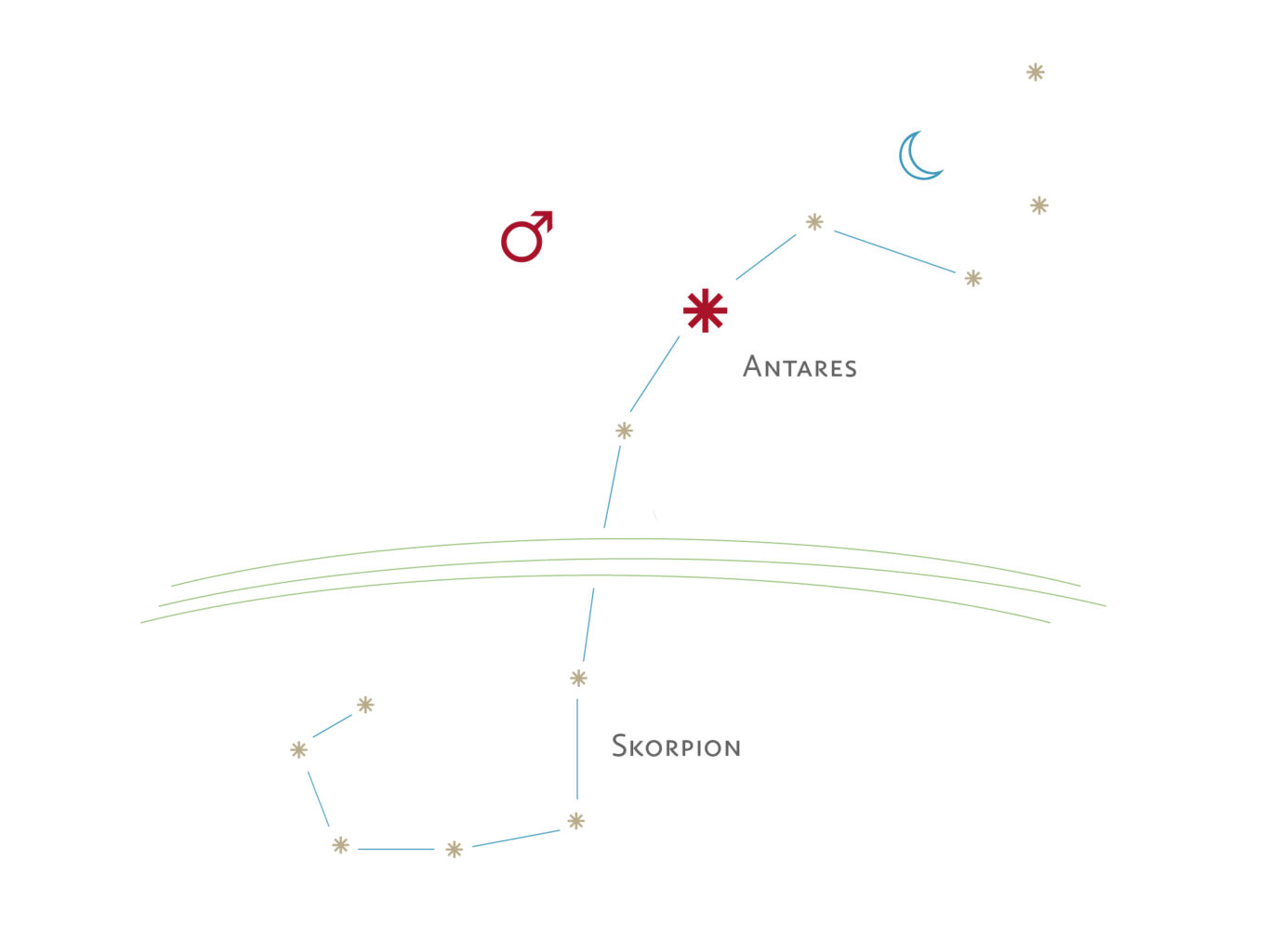
On January 9th, Venus passes the Sun and changes into the morning sky. Just one day later Venus can be seen at dawn and after another two weeks, it has reached Mars. Now the dance begins! At a distance of six degrees, both planets are at the same height above the morning landscape. It is the same zodiacal passage where the Great Conjunction occurred, the space between Sagittarius and Capricorn. Sagittarius fills a field with its many stars, Capricorn forms a shell with its star lines. Where core and shell, center and periphery meet as constellations, this is where these planetary gatherings take place, and so the stars also join in the credo of Jupiter and Saturn 2020 and now Venus and Mars 2022: It is about the unity of center and periphery, of what the self wants and what the periphery asks for, it is about the unity of productivity and receptivity. This contrast, which – it was discussed here last year – is shown in Jupiter and Saturn and also in the two sides of the human face. Because a look at a human face reveals that the right eye is directed outwards, while the left one seems to be looking in. With the meeting of Mars and Venus, this contrast between Jupiter’s cognitive powers and Saturn’s transcendence comes closer both astronomically and spiritually. With Mars and Venus, will and love now enter into a conversation. In fact, it’s a conversation, because unlike the meeting of Jupiter and Saturn, these planets do not come together in a one-time conjunction, no, as if holding hands, these two planets are united with each other for months. It is a dance that the two earthly neighbors show in the morning sky!
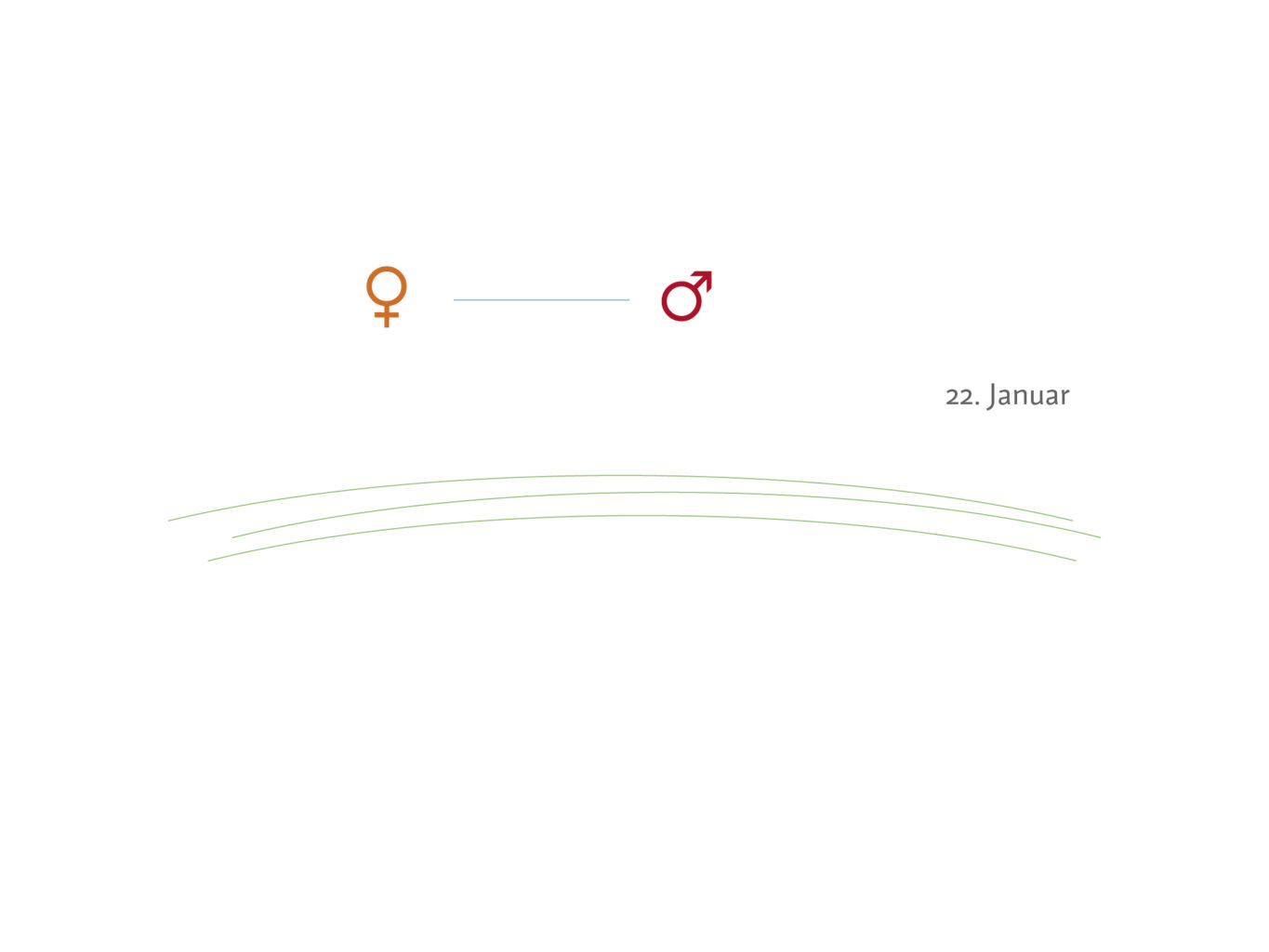
The eye calls the hand
The six degrees distance will become four degrees in February. Day after day, at dawn, the double star stands on the horizon, and every day the angle of the duo shifts. Morning after morning the call seems to rise to unite Venus and Mars in the soul, to bring love and strength together. What does that mean? That may mean pouring love into every action, including the question of what others want from me in every ‹I want›, on what quiet expectation one’s own action meets. Wolfgang Schad came up with the idea that Goethe’s ‹Faust› should be the drama of the 20th century and his work ‹Wilhelm Meister› that of the 21st century. While Faust fulfills his own will and thus leaves a trail of death, Wilhelm Meister speaks of a group of people, it is about the game of seeing, understanding, and acting in a community. «The doer is always unscrupulous; no one has a conscience but the viewer.» This is what Goethe writes in his reflections and maxims. Today, one can assume that this either/or of acting and looking is becoming a both/and. In the game of contemplation and action, of Saturn and Jupiter, love sinks into action. One of the most touching moments in the twelve-year life of a Waldorf student is the first form-drawing epoch. The hand draws a figure eight, a spiral, or another difficult shape on the paper with the pen and the eye follows the track and calls hand and pen to the ideal path again and again. Just don’t erase anything because the crooked move is not wrong, but rather it has awakened the eye for the correction! In the production of ‹Faust› at the Goetheanum, I often sat next to the director Andrea Pfaehler as the dramaturge. Because every correction is intended to support the actor and not hinder him or her, her will to direct is constantly in dialogue with the ability and will of the actors. The Venus-inspired will starts with a question.
Coexistence is full of examples of this silent game of question and answer in volitional life. Anyone who has taken part in a communal meal in distant China will have experienced it. As a European, you go through two lessons. You sit with eight or ten people with a small plate at a round table. The food is placed on a second, smaller rotating plate in the middle of the table. You want the noodles and turn the plate. But with that, you tear the bowl away from another person who was about to help himself to the rice. So you learn to first look around to see if anyone is currently helping him- or herself. Then comes the second lesson: you turn the disk again and have overlooked that someone at the table next to you had the intention of moving the disk in the other direction. Lesson number two: It’s not enough to see if someone is helping him- or herself, you also have to see if someone is about to start helping him- or herself. What a field of learning! While in Europe one addresses one’s own need at the table with «Could you please pass the butter?», it is part of the Chinese table culture to perceive the actual and intentional will life of the entire community before acting. Rudolf Steiner’s half-sentence: «It is only healing when the whole community is formed in the mirror of the human soul», thus becomes a habit with every table fellowship.
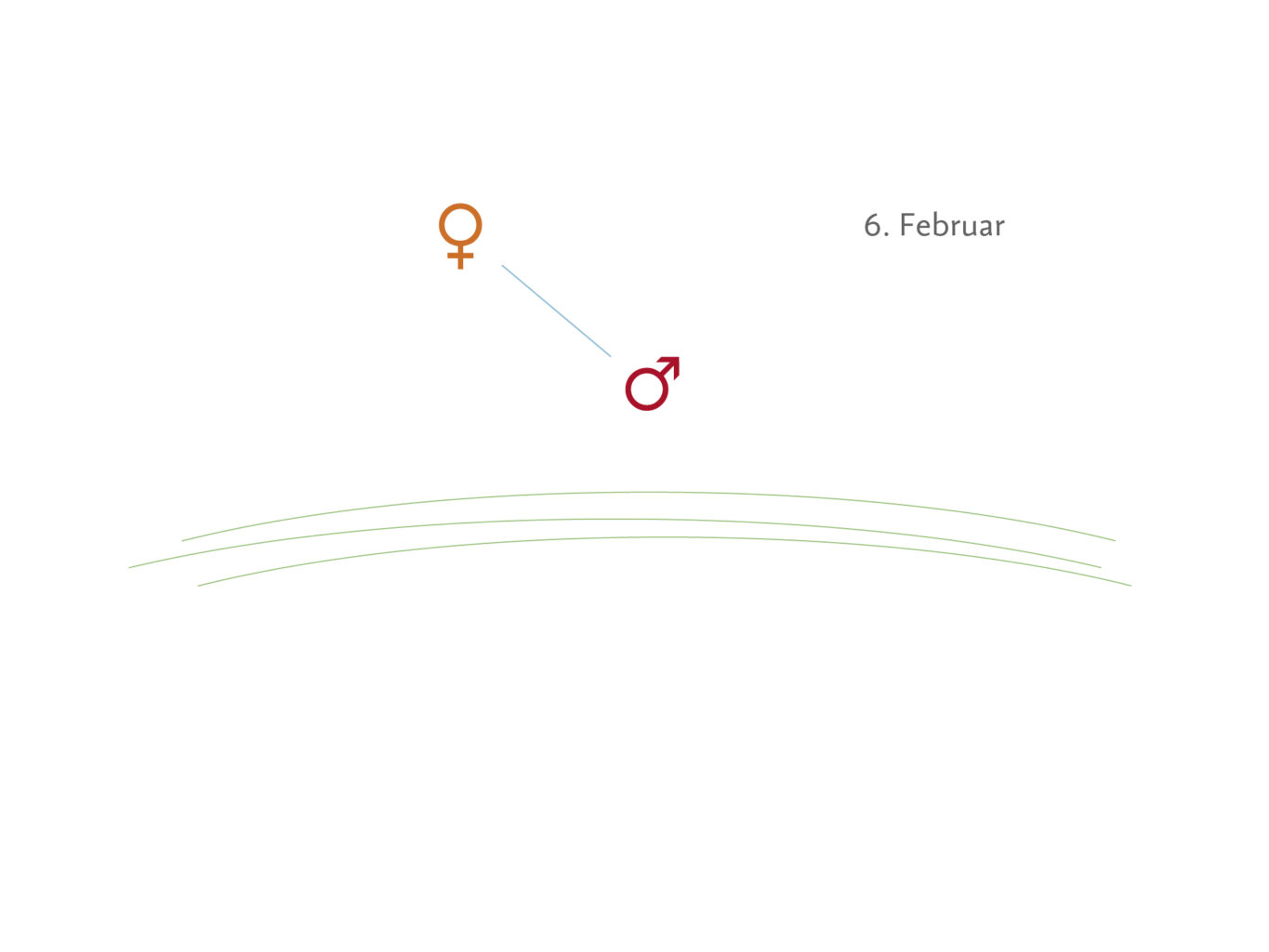
Do you feel what I’ll want?
It follows the much-quoted suggestion that from the climate crisis to religious peace, the solution lies in doing things and only doing things that are done out of love. Nowhere is it so simply noted as in Paul’s letter to the Corinthians: «If I spoke in the tongues of men and angels and did not have love, I would be a sounding bronze or a tinkling cymbal.» Doing everything for and out of love is one side of the reputation. The other turns it around and asks to put Mars next to Venus, to turn every love impulse into action. That means not leading one’s will out of one’s own intentions, but saying the Pauline ‹Thy will be done› to one’s fellow human beings. This refers to the third and most demanding form of empathy. It’s not difficult to understand what someone means when he or she speaks. It’s harder to understand the feelings behind it. The high school is to unfold the will that is dormant in the other person and thus convert empathy into commitment. Claus Otto Scharmer calls it ‹creative hearing›, following Rudolf Steiner’s triple observation of people.1 The following scene brings the three stages of empathy into the picture: A couple is driving in the car and she wants to take a break and turns to him. «Would you like a coffee?» His answer: «No.» He does not hear the wish, but only the factual level. Any computer can fulfill this kind of understanding. Only empathetic listening is able to grasp the wish between the lines and respond with: «Yes!» The actual friendship only begins with creative listening. Here you anticipate the question because you can feel the intention, the will of the other person, and before the wish is expressed, you suggest: «We should have coffee now.» The person addressed hears it and in the next moment feels that this is exactly what she or he wants, but that this need has not yet reached consciousness. The other becomes the midwife of their own will that is still dormant – what a gift! There is hardly anything more connecting than this ‹Your will be done› in the social sphere. It documents the friendship. Here love sinks into action.
Every day it is worth looking up at the morning sky to be inspired by the daily changing constellation of Venus and Mars. Once a month, the crescent moon aligns with the pair of planets, bringing Earth’s two planetary neighbors closer together.

From duet to big concert
The distance between the two planets is also maintained in the pre-Easter period. At the beginning of April, Saturn joins the two Wanderers. The distant planet will probably give depth to the conversation of will and love. With this Saturnian image, the dance of Venus and Mars ends at Easter. The third act begins: Jupiter is now added to the left of the three planets, in May Uranus joins, and finally in June Mercury, low on the horizon. On St. John and the days before, all the planets, from Mercury to the minor planet Pluto, are gathered in the morning firmament, and in the rare Copernican order: Mercury-Venus-Mars-Jupiter-Saturn and inserted in between is Transsaturne: Uranus-Neptune-Pluto. There is probably no stronger image that can be thought of to weigh the whole, the totality, than when all the planets are gathered in a row. This occurs in the days of St. John, the feast of the Baptist, who recedes in the presence of the Son. «The other must grow, but I must dwindle,» says the painter Matthias Grünewald in his altarpiece of the Baptist (John 3:30). After the self-assurance through the conjunction Jupiter and Saturn and the initiation into the encounter through the dance of Venus and Mars, this disappearance does not mean that the personality is lost. On the contrary: Being able to grasp the entirety in this way allows them to continue to grow.
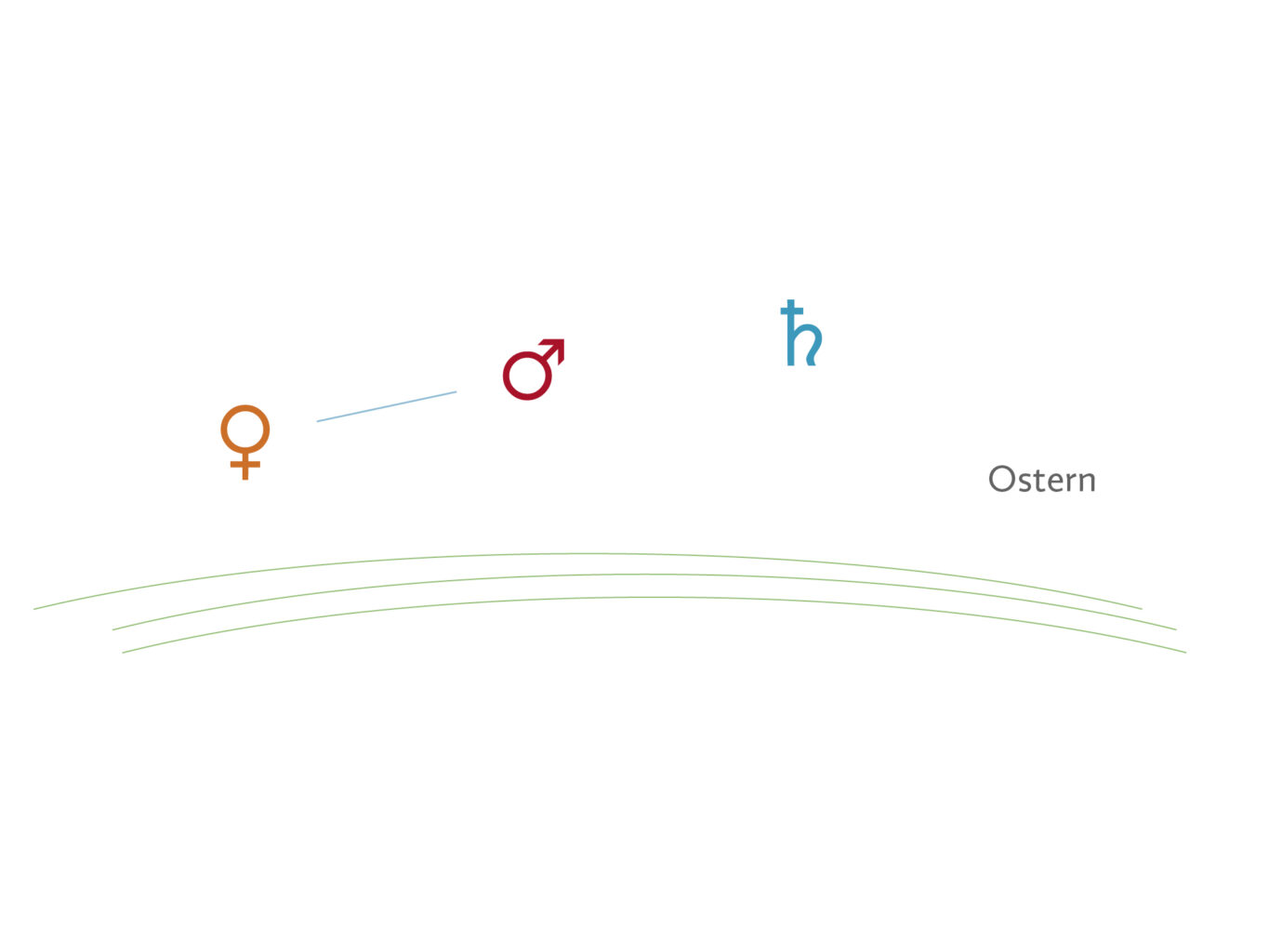
Music of the Future
The conjunction of Jupiter and Saturn brought the individual into the picture, for Jupiter radiates out and Saturn seems to absorb all the light. The planetary giants thus show a contrast that takes place in every human being and comes into the picture in the face, the breath from the inside and outside, from productivity and devotion. Now the constellation widens over the Easter dance of Venus and Mars to the Council of the entire planetary system. Rudolf Steiner emphasizes again and again that one can only speak of an ‹I› within oneself to such an extent that one is able to take in the whole world. This grand side is revealed in May and June when all the planets line up. What perfect geometry! It seems the entire solar system is witnessing the Great Conjunction.
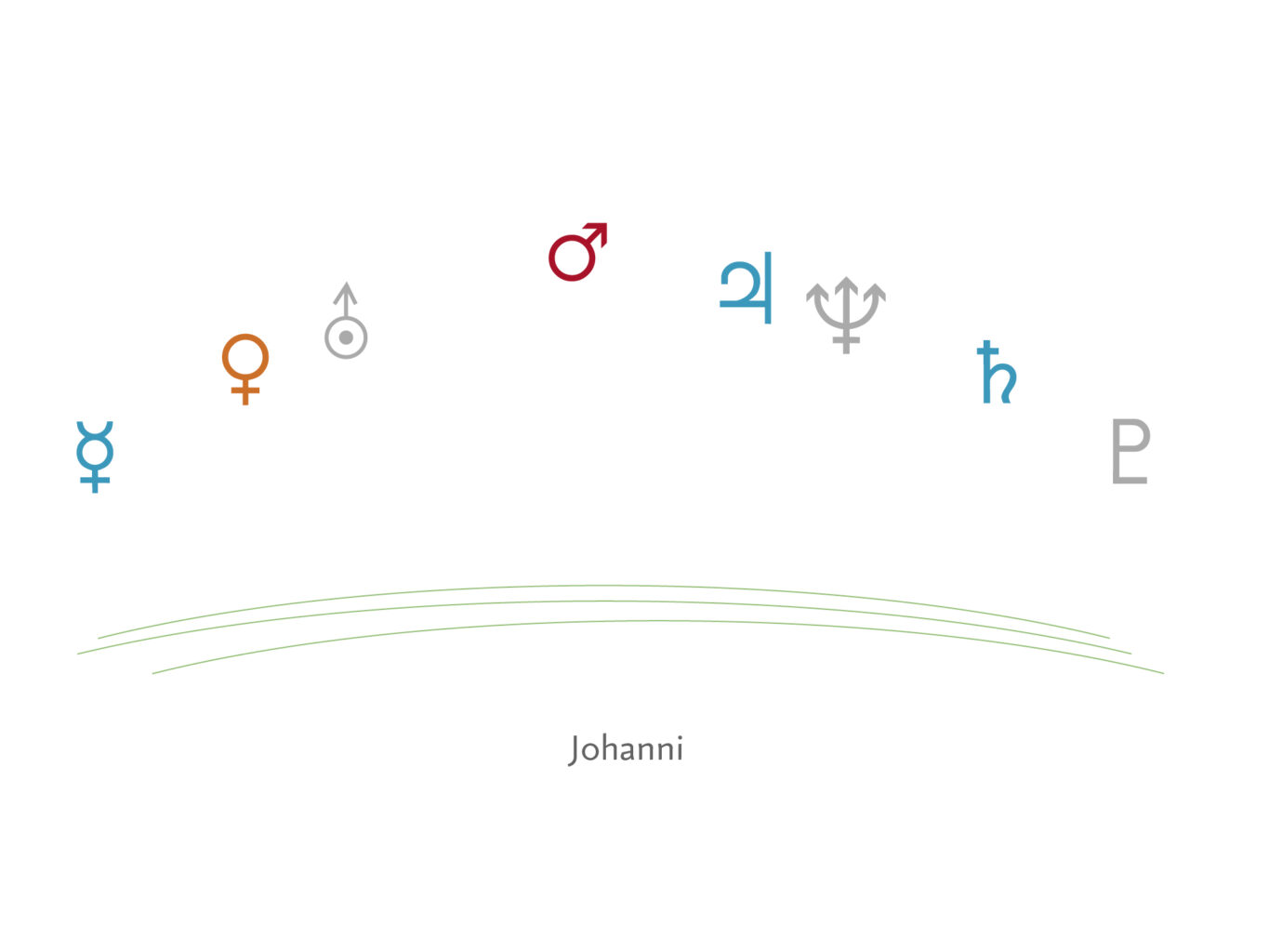
This current celestial spectacle probably provides more questions than answers. That is the mark of a calling, an invitation. It asks, through the encounter with oneself, to become capable of learning to dance with others near and far, to learn to dance with nature. Dancing means fully experiencing the encounter as a couple and keeping an eye on the whole. Dancing means letting the breath swing between the small and the large community. All the many individual people become one whole – humanity. This whole arches over the landscape like a promise, a dream of the future.
Further information and aids for observation: Wolfgang Held, Sternkalender 2022/2023. Dornach 2021.

